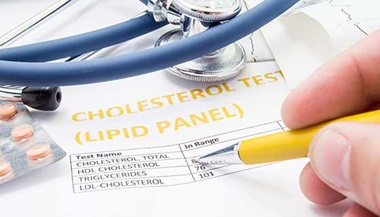How Statin Drugs Protect the Heart
More than 200 million people around the world take statin drugs for their heart health. Shifting ideas about the risks and benefits of statins over the years, however, have left some new patients confused about whether these drugs are right—or safe—for them.

“Traditionally, statins were viewed as purely cholesterol-lowering drugs. So it made sense just to use them for people with high cholesterol,” explains Johns Hopkins cardiologist Michael Blaha, M.D. “But we’ve learned that they also benefit people with lower levels of cholesterol who are at a high risk of heart disease. So we now think of statins as risk-reducing drugs.”
This dramatic change in thinking means that people who once were not candidates for statins are now prescribed them to lower their risk of heart attack and stroke.
How statins work
Statins help lower low-density lipoprotein (LDL) cholesterol, also known as “bad” cholesterol, in the blood. They draw cholesterol out of plaque and stabilize plaque, Blaha says. Plaque is a waxy substance consisting mainly of cholesterol deposits that can build up within the walls of the arteries, interfering with blood flow to and from the heart and leading to heart attack and stroke.
Early on, plaque build-up can be controlled by healthy lifestyle choices, such as switching to a heart-healthy diet, exercising and not smoking. If those efforts are unsuccessful over time, doctors will introduce treatment with statins to benefit the arteries and prevent further damage.
Who gets statins?
Being prescribed statins is no longer simply a result of having poor cholesterol numbers. Instead, doctors use a variety of ways to identify high-risk patients. These include examining all of your heart-health measures (including blood pressure, blood glucose and body-mass index) as well as the results of tests that assess plaque build-up, such as a coronary calcium scan.
Statin risks and benefits
Are statins safe? For most people, the answer is a resounding yes, according to a 2014 Johns Hopkins meta-analysis of 20 years worth of published research. It showed that the risks of long-term use of statin drugs are low and the potential benefits are very high. Researchers combed through hundreds of papers that had studied statins since 1994 to determine the evidence of side effects.
Their review, published in British Medical Journal, found an increase in the risk of muscle aches. There was also a modest risk of elevated blood glucose, which can tip some people into developing type 2 diabetes. What’s unclear is whether those people, who also had other risk factors for diabetes, would have developed the condition anyway. Statins don’t cause memory loss or cataracts, as has been claimed in the past. For most at-risk patients, the benefits far exceed the risks, the researchers concluded. Of course, if you notice any unusual effects after beginning statin therapy, tell your doctor.
“We know a lot about statins because they’ve been around for a long time and taken by so many people,” Blaha says. “The scale clearly tips to benefits in most at-risk patients.”
Why did my doctor prescribe statins if my cholesterol is normal?
Even if your circulating cholesterol is normal according to the numbers on your blood test results, there may already be plaque present in your arteries that indicates you’re at risk for cardiovascular disease,” says Johns Hopkins cardiologist Michael Blaha. Additional tests may show more conclusively that plaque build-up is a problem.
Because many factors are involved, your cholesterol numbers may be considered normal and yet you may still be found to be at an elevated risk for heart problems. As a result, statin medications are now used to lower the risk of heart disease and heart events in most anyone found to be at high risk.





